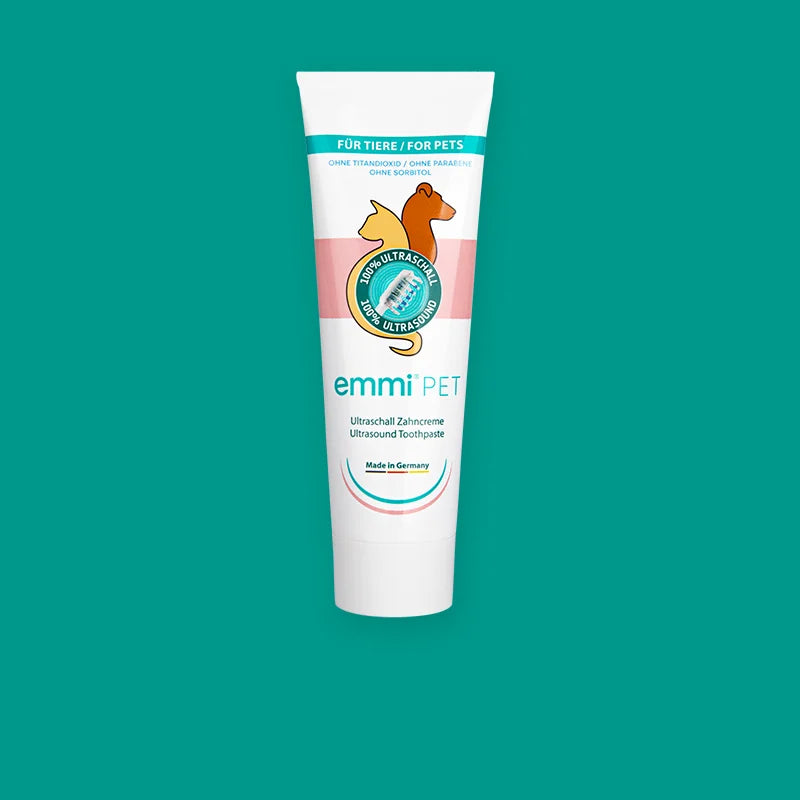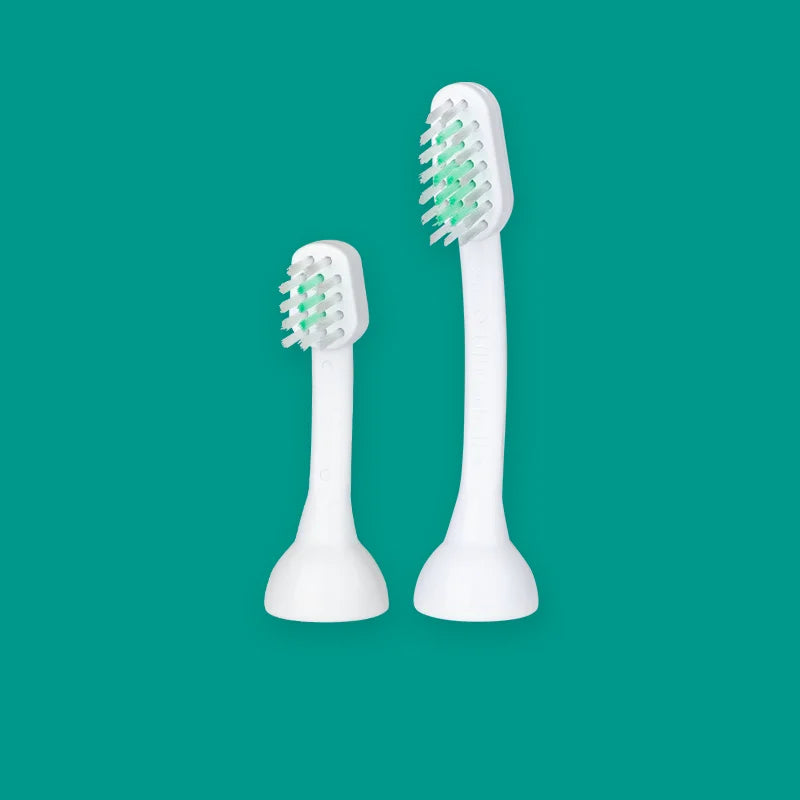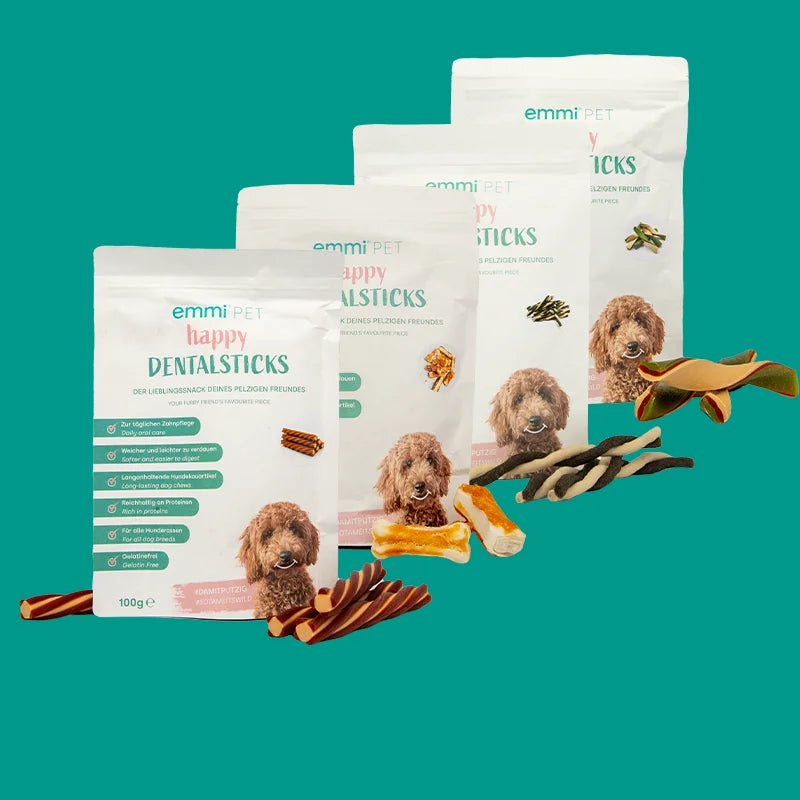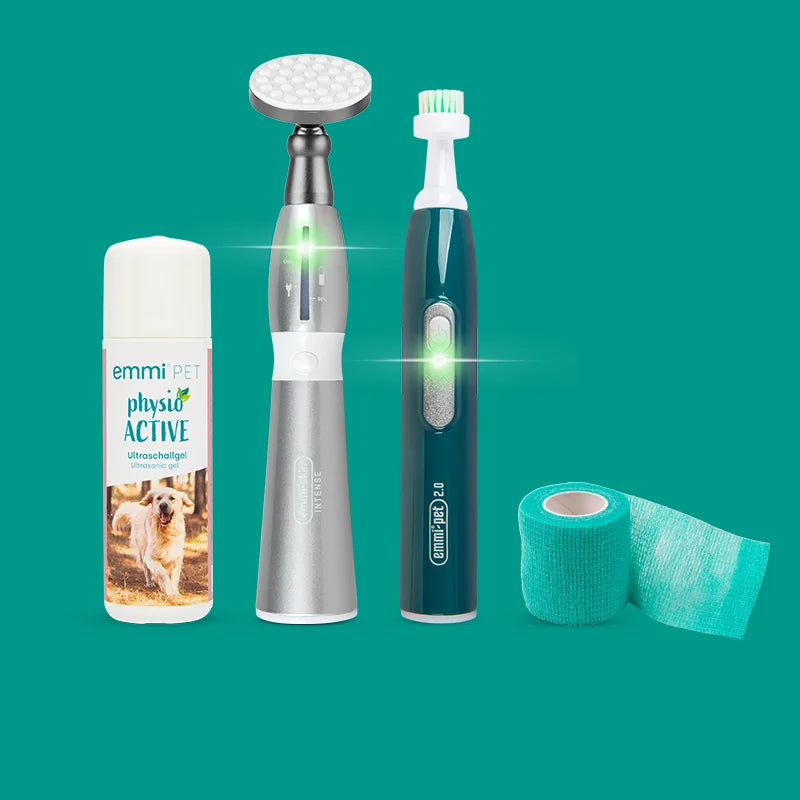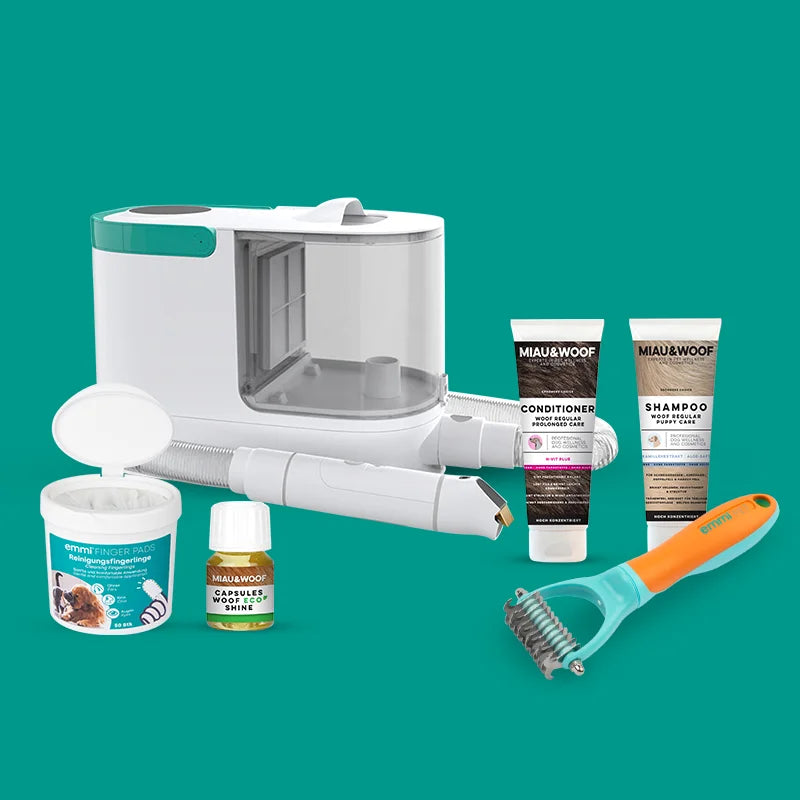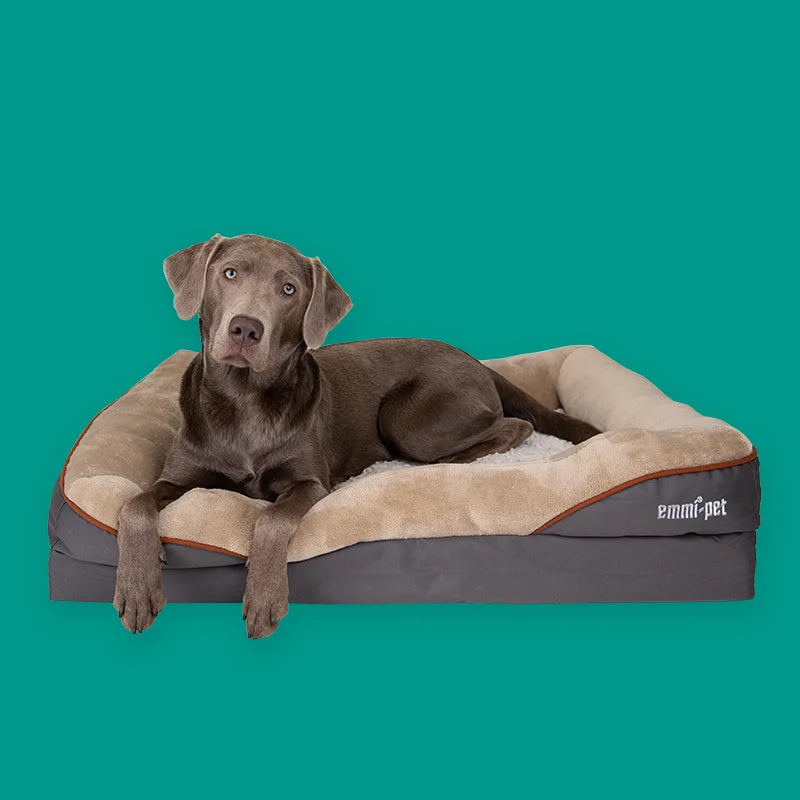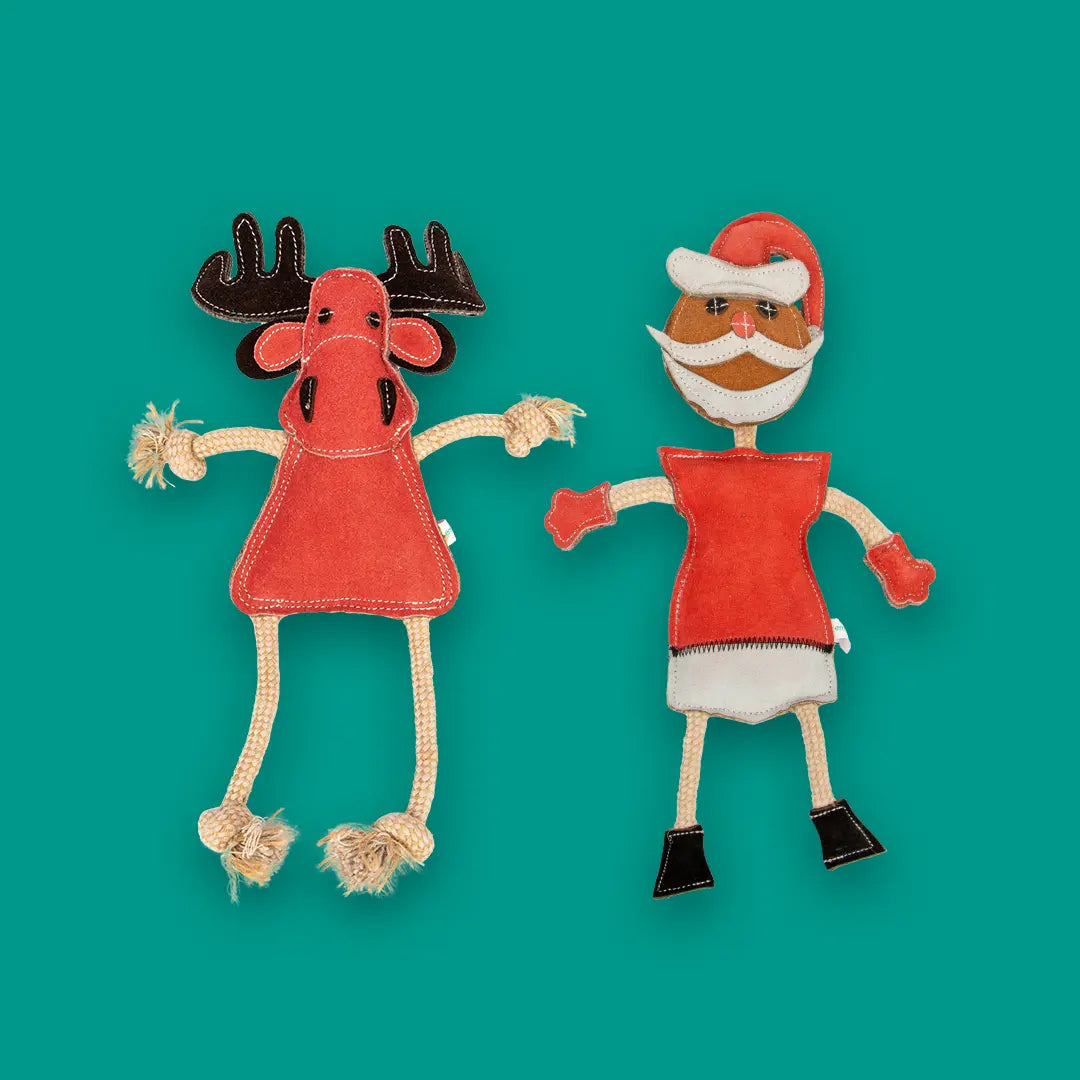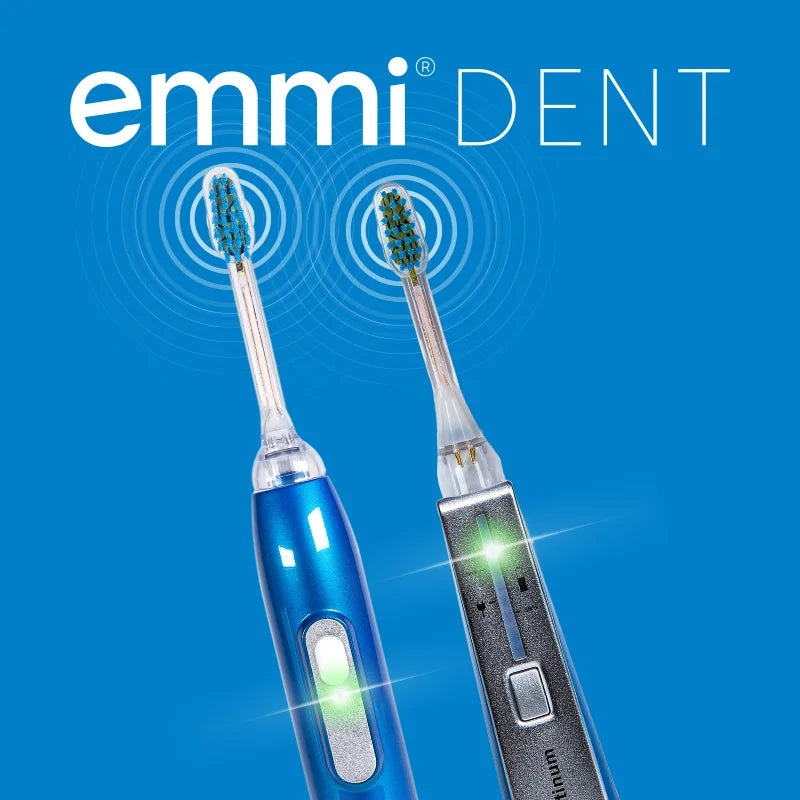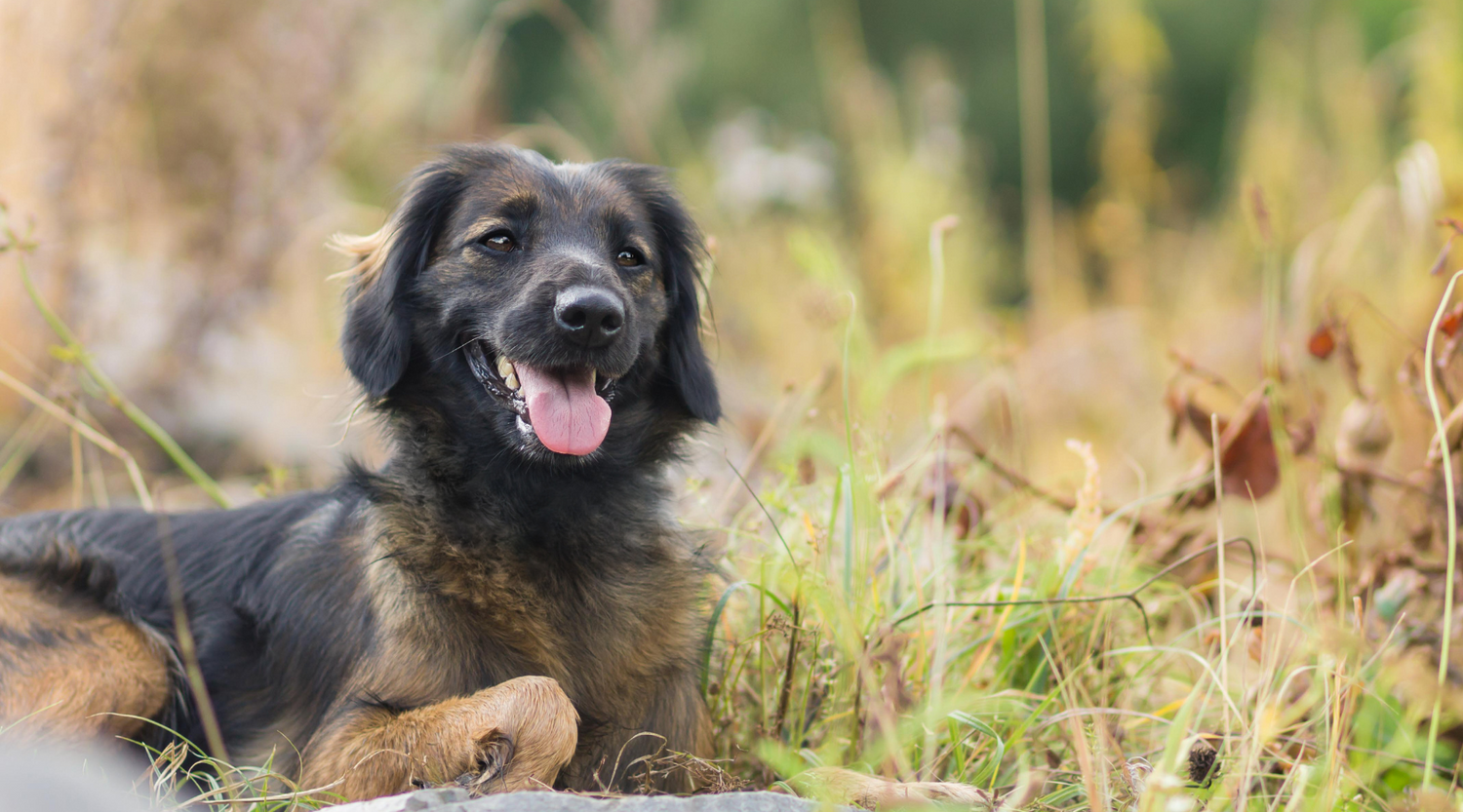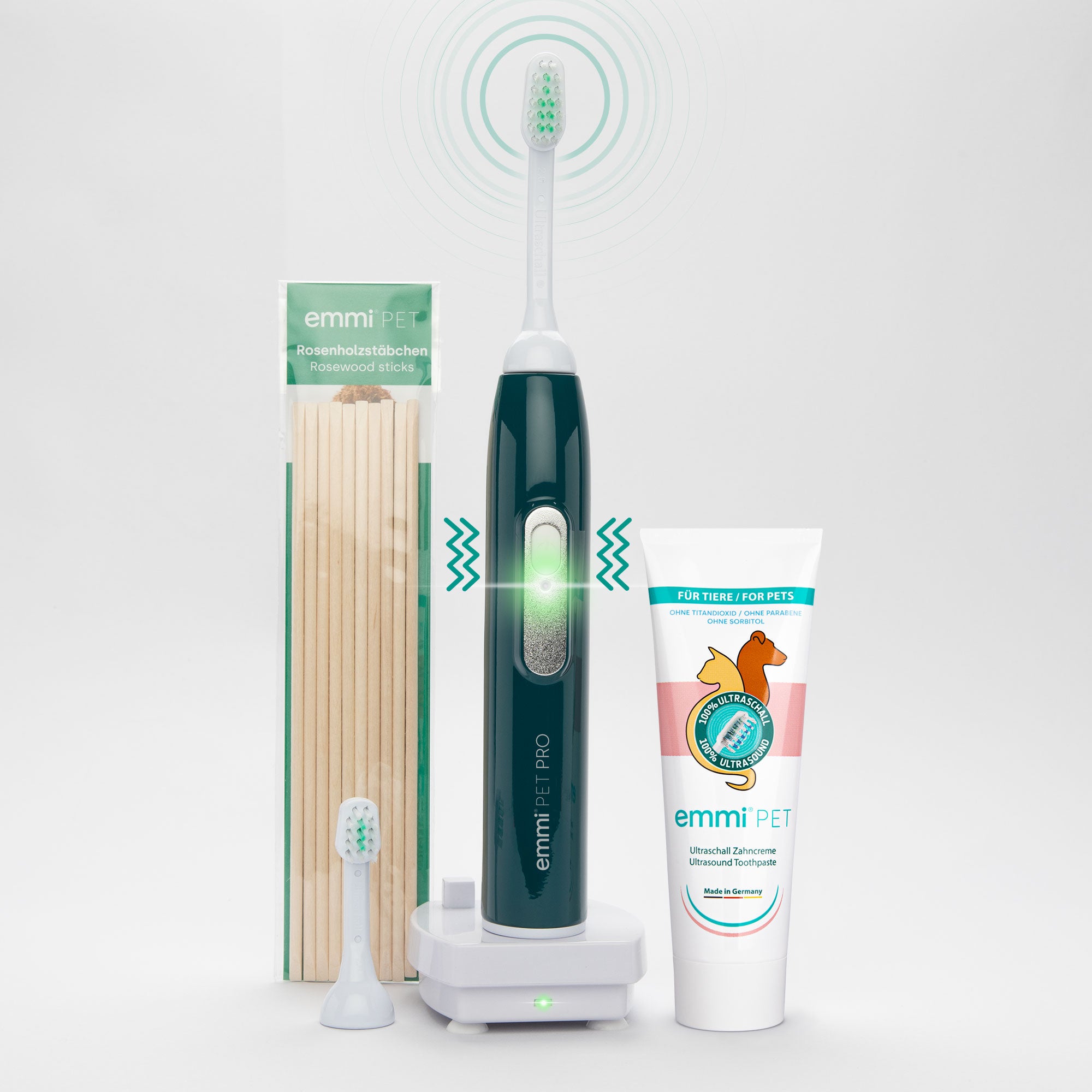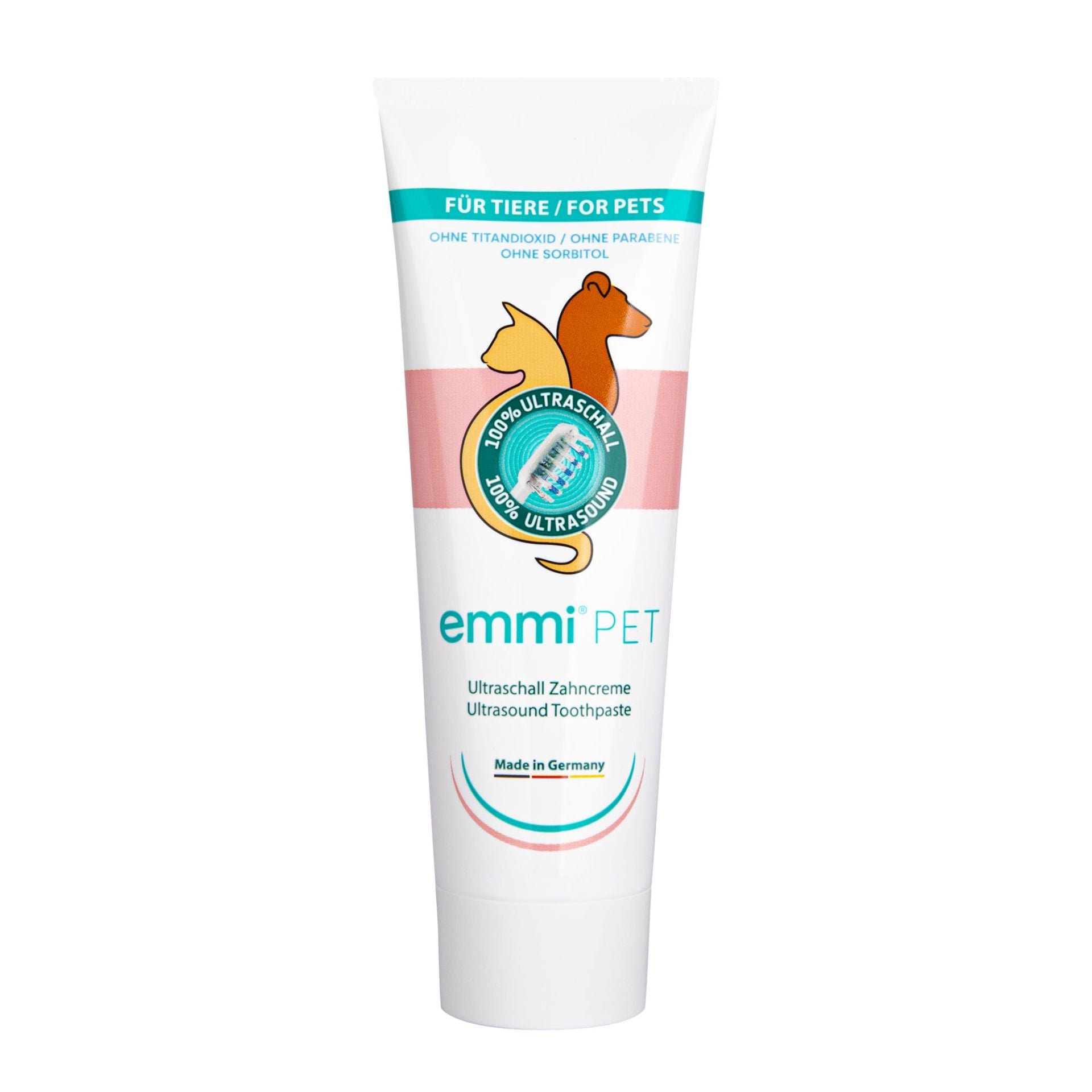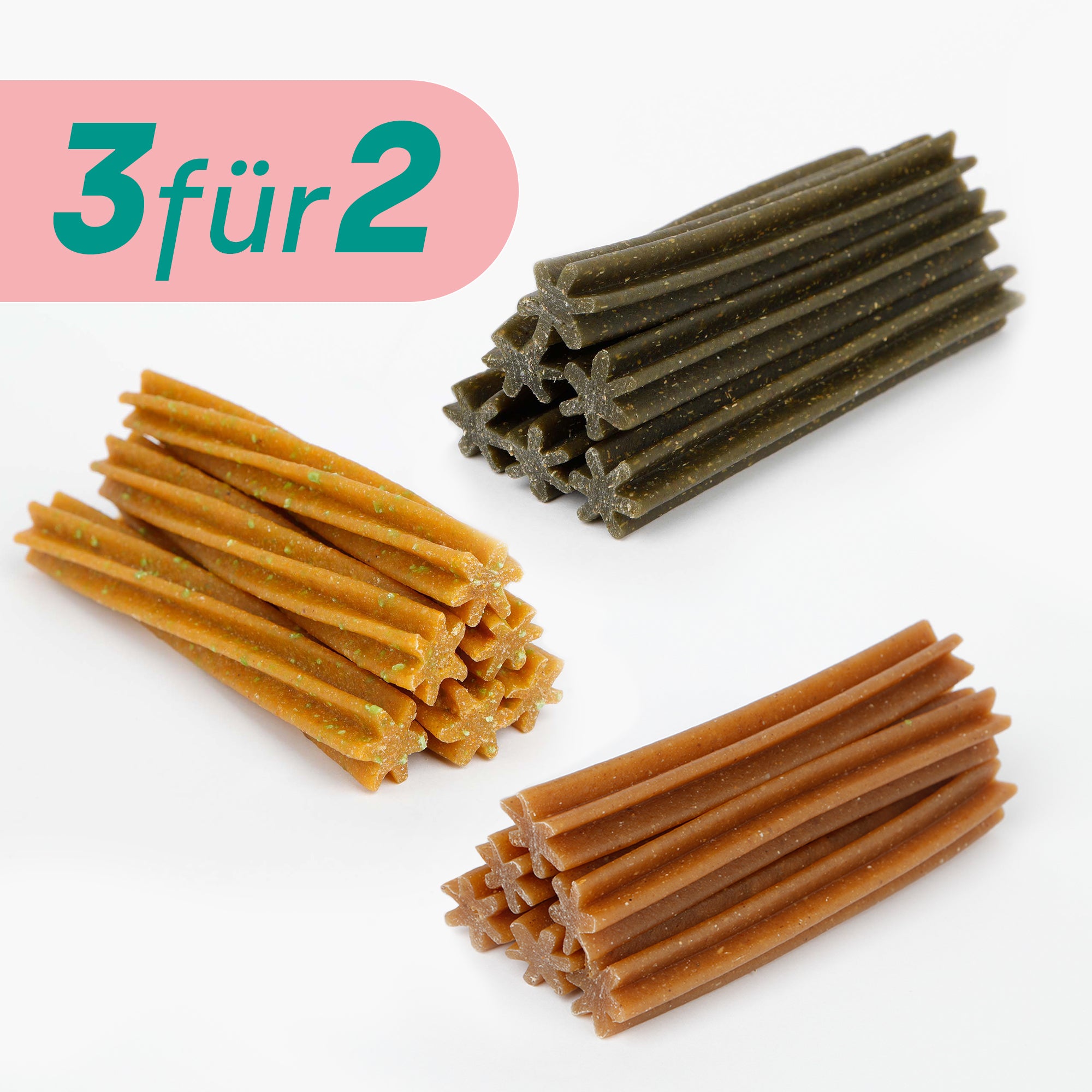<p>The days are long, the mood is light—and our dogs are enjoying life to the fullest too. Whether it's a picnic in the park, coffee on the terrace, or a spontaneous trip to the lake, there are tasty treats, tempting aromas, and lovingly served snacks everywhere.</i></em> Dog ice cream, treats as rewards, dried meat as a snack – for many four-legged friends, these are all part of everyday summer life.
<p>But it is precisely during this time that the strain on their teeth grows unnoticed. Because what starts as a loving gesture can have a negative effect on your dog's sensitive mouth – <em><i>not loudly, but steadily</i></em>. Tartar does not form overnight. It develops in a silent process – often encouraged by <em><i>too many snacks</i></em>, <em><i>too little cleaning</i></em> and <em><i>too few check-ups</i></em>.
<p>And that's exactly why it's worth taking a closer look: <strong>Why is summer the peak season for dental problems? What are the typical mistakes that are particularly common during the warm season? And how can you protect your dog's dental health with small changes – without sacrificing any of the joys of summer?</strong></p>
<p>This article provides answers that are practical, well-founded and aimed at ensuring that your dog <em><i>not only chews happily</i></em>, but also <em><i>smiles healthily throughout the summer</i></em>.</p>
<h2><span style="color: #3ba79d;"><strong>Why summer likes tartar</strong></span></h2>
<p><strong>Tartar does not form overnight – it grows slowly and often unnoticed. The basis for this is dental plaque: a soft film of saliva, food residues, and bacteria that builds up on the teeth day after day. If it is not removed regularly, the substances it contains combine with minerals from saliva and gradually harden into solid tartar.
<p>Once hardened, this coating is almost impossible to remove without professional help. This makes it all the more important to understand how it forms at an early stage and to prevent it in a targeted manner. In summer in particular, various factors combine to accelerate tartar formation without it being immediately noticeable.
<p>On the one hand, there are the many small treats given between meals – often soft, sticky, or high in fat – which tend to accumulate in the spaces between the teeth and along the sensitive gum line.
They taste good, but they stick – creating ideal conditions for bacterial colonization.
On the other hand, your dog's behavior changes naturally in summer: they pant more to cool down, often eat less, and chew significantly less or for shorter periods of time. This eliminates an important cleaning effect that otherwise occurs automatically through the chewing motion.
<p>In addition, many everyday routines are disrupted during the warm season: later walks, trips to the water, evenings in the garden, or vacations disrupt the rhythm and care schedule. It is not uncommon for teeth brushing to be postponed – or forgotten altogether.
<p>All of this together creates an environment in the mouth that is ideal for tartar: warm, moist, poorly rinsed and with plenty of nutrients for bacteria. If you don't take conscious steps to counteract this, you risk a development that only becomes apparent late – and is then usually expensive to treat.
<h2><span style="color: #3ba79d;"><strong>Summer chewing fun with brains – typical mistakes and what you can do better</strong></span></h2>
<p>If you want to do something good for your dog in summer, you don't have to give up treats and chewing fun. On the contrary – small rewards can sweeten everyday life, especially now. The only thing that matters is <em><i>how</i></em> and <em><i>what</i></em> you give – and how you maintain a balance between enjoyment and dental health.
<p>Here are the most common summer snack pitfalls – and stylish, tooth-friendly alternatives for a completely relaxed summer with your dog:</p>
<p>But it is precisely during this time that the strain on their teeth grows unnoticed. Because what starts as a loving gesture can have a negative effect on your dog's sensitive mouth – <em><i>not loudly, but steadily</i></em>. Tartar does not form overnight. It develops in a silent process – often encouraged by <em><i>too many snacks</i></em>, <em><i>too little cleaning</i></em> and <em><i>too few check-ups</i></em>.
<p>And that's exactly why it's worth taking a closer look: <strong>Why is summer the peak season for dental problems? What are the typical mistakes that are particularly common during the warm season? And how can you protect your dog's dental health with small changes – without sacrificing any of the joys of summer?</strong></p>
<p>This article provides answers that are practical, well-founded and aimed at ensuring that your dog <em><i>not only chews happily</i></em>, but also <em><i>smiles healthily throughout the summer</i></em>.</p>
<h2><span style="color: #3ba79d;"><strong>Why summer likes tartar</strong></span></h2>
<p><strong>Tartar does not form overnight – it grows slowly and often unnoticed. The basis for this is dental plaque: a soft film of saliva, food residues, and bacteria that builds up on the teeth day after day. If it is not removed regularly, the substances it contains combine with minerals from saliva and gradually harden into solid tartar.
<p>Once hardened, this coating is almost impossible to remove without professional help. This makes it all the more important to understand how it forms at an early stage and to prevent it in a targeted manner. In summer in particular, various factors combine to accelerate tartar formation without it being immediately noticeable.
<p>On the one hand, there are the many small treats given between meals – often soft, sticky, or high in fat – which tend to accumulate in the spaces between the teeth and along the sensitive gum line.
They taste good, but they stick – creating ideal conditions for bacterial colonization.
On the other hand, your dog's behavior changes naturally in summer: they pant more to cool down, often eat less, and chew significantly less or for shorter periods of time. This eliminates an important cleaning effect that otherwise occurs automatically through the chewing motion.
<p>In addition, many everyday routines are disrupted during the warm season: later walks, trips to the water, evenings in the garden, or vacations disrupt the rhythm and care schedule. It is not uncommon for teeth brushing to be postponed – or forgotten altogether.
<p>All of this together creates an environment in the mouth that is ideal for tartar: warm, moist, poorly rinsed and with plenty of nutrients for bacteria. If you don't take conscious steps to counteract this, you risk a development that only becomes apparent late – and is then usually expensive to treat.
<h2><span style="color: #3ba79d;"><strong>Summer chewing fun with brains – typical mistakes and what you can do better</strong></span></h2>
<p>If you want to do something good for your dog in summer, you don't have to give up treats and chewing fun. On the contrary – small rewards can sweeten everyday life, especially now. The only thing that matters is <em><i>how</i></em> and <em><i>what</i></em> you give – and how you maintain a balance between enjoyment and dental health.
<p>Here are the most common summer snack pitfalls – and stylish, tooth-friendly alternatives for a completely relaxed summer with your dog:</p>

